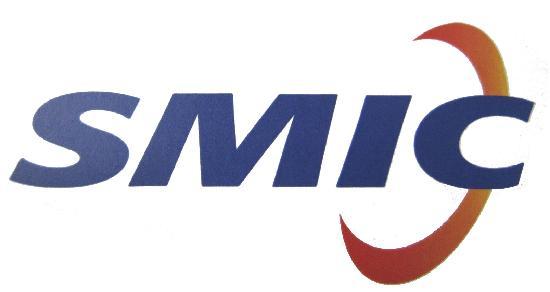JD(09618)
Search documents
京东云计算成立科技新公司,含AI及机器人业务
Qi Cha Cha· 2025-12-16 07:08
fund 企查查APP显示,近日,宿迁京数元科技有限公司成立,经营范围包含:智能机器人销售;工业机器人 销售;智能机器人的研发;互联网数据服务;人工智能公共数据平台等。企查查股权穿透显示,该公司 由京东云计算有限公司全资持股。 (原标题:京东云计算成立科技新公司,含AI及机器人业务) ...
居家暖冬经济升温 京东京喜自营取暖器、智能床品热销
Zhong Jin Zai Xian· 2025-12-16 06:48
Core Insights - The demand for "warm technology" home products is driving the "home winter economy," as consumers seek smart, comfortable solutions for winter living [1] - JD's discount shopping brand, Jingxi, is leveraging a model of "source direct procurement + direct connection with industrial belts" to offer high-quality, cost-effective products that meet modern family needs for winter [1] Heating Products - Functional heating devices are in high demand, with sales of products like warm air fans and small heaters exceeding ten thousand units in two months [2] - The winter season sees a peak in sales for household appliances, with consumers increasingly valuing energy efficiency and adjustable temperature features in their heating choices [2] Kitchen Appliances - The sales of kitchen appliances, particularly electric hot pots, have surged, with 40,000 units sold since October, as they provide a comforting cooking experience during the winter [4] - The popularity of multifunctional electric hot pots and air fryers reflects a growing consumer preference for convenience and health in cooking [4] Bedding Products - Sales of heating blankets have exceeded 40,000 units in a month, highlighting the importance of quality bedding for comfort and sleep during cold weather [6] - Other bedding products, such as cotton quilts and supportive pillows, have also seen significant sales, indicating a strong market for high-quality winter bedding solutions [6] Future Outlook - Jingxi plans to deepen collaborations with quality industrial belts to continue providing high-quality home products that enhance consumer happiness and meet the desire for a better living experience [7]
京东云计算成立科技新公司 含AI及机器人业务
Zheng Quan Shi Bao Wang· 2025-12-16 06:37
人民财讯12月16日电,企查查APP显示,近日,宿迁京数元科技有限公司成立,经营范围包含:智能机 器人销售;工业机器人销售;智能机器人的研发;互联网数据服务;人工智能公共数据平台等。企查查 股权穿透显示,该公司由京东云计算有限公司全资持股。 ...
低温催热“御寒经济”京东京喜自营爆款棉拖热卖70万单
Jin Rong Jie Zi Xun· 2025-12-16 06:27
随着全国多地气温持续走低,"御寒经济"热度明显上升,消费者在不同生活场景下的保暖需求也更加多元和细致。人 们不再只满足于厚重的衣物,而是会针对通勤、居家、户外、骑行等不同场合,选择更合适的保暖装备。 这一消费趋势的变化,对供应链的响应速度和协同效率提出了更高要求。京东旗下特价购物品牌京喜自营依托的"源 头直采、工厂直供"模式,正是其能够快速响应市场的关键。早在降温来临之前,京喜自营便与全国多个优质产业带 的制造企业展开了深度合作。凭借对消费趋势的准确预判和供应链的高效协同,京喜自营与产业带工厂紧密配合,成 功将市场需求转化为了实实在在的销售增长。 通勤族御寒需求升级 京喜自营多款羽绒服棉服热销 随着全国多地气温走低,居家时间增多,消费者对内衣、鞋袜等基础保暖装备的需求明显上升,不仅看重保暖效果, 也开始关注舒适度、颜值与性价比。京喜自营迅速把握这一趋势,与多个产业带制造工厂携手,推出一系列受欢迎的 居家保暖单品。 其中最具代表性的,是与义乌多家工贸一体制造商联合研发的小熊小兔棉拖。京喜采销团队通过优化成本,在保障品 质的前提下让价格更有竞争力,单品供货价较以往下降约15%。依托"一品多商"的产能储备策略,该棉 ...
京东工业谷应鲲:智能技术能让工业实现极致运营效率
Xin Lang Cai Jing· 2025-12-16 06:13
专题:第十八届中国工业论坛 第十八届中国工业论坛于12月16日在北京举办,主题为"融合创新 工业当强"。京东工业CTO谷应鲲出 席并演讲。 专题:第十八届中国工业论坛 第十八届中国工业论坛于12月16日在北京举办,主题为"融合创新 工业当强"。京东工业CTO谷应鲲出 席并演讲。 谷应鲲表示,通过技术让工业世界实现极致运营效率,使企业采购能拥有消费侧"又快又好又便宜"的体 验。工业供应链的核心挑战是:工业品(如紧固件品类超千万种)SKU海量、标准化程度低,数据处理 与标准化是巨大难题;相比已高度成熟的消费供应链,工业侧供应链在效率、成本、体验上存在显著差 距;场景严肃复杂,工业应用对精度、可靠性要求极高,容错率低,AI的"幻觉"等问题需要克服。基于 京东消费侧供应链的技术与能力积累,投身工业侧,解决其无序、低效问题。 新浪声明:所有会议实录均为现场速记整理,未经演讲者审阅,新浪网登载此文出于传递更多信息之目 的,并不意味着赞同其观点或证实其描述。 责任编辑:王翔 谷应鲲表示,通过技术让工业世界实现极致运营效率,使企业采购能拥有消费侧"又快又好又便宜"的体 验。工业供应链的核心挑战是:工业品(如紧固件品类超千万种 ...
京东与国际铂金协会达成战略合作 成为其首个线上零售合作伙伴
Jin Rong Jie· 2025-12-16 06:10
近日,京东与国际铂金协会(PGI®)达成战略合作,成为其首个线上零售合作伙伴,双方将共同推动铂金首饰的线上 消费体验升级。同时,京东"铂金购物节"也同步开启,即日起至12月31日,消费者在京东搜索"铂金购物节",即可选 购周大福、周生生、六福珠宝、周六福、潮宏基等知名品牌的铂金首饰好物,享满1299元赠珠宝箱及欧舒丹润手霜、 满3000元赠珠宝箱及兰蔻润唇膏等专属礼遇,由国际铂金协会专属定制。 国际铂金协会(PGI®)作为全球贵金属珠宝行业的权威机构,长期致力于铂金首饰的推广与行业规范建设,提倡"韧 真铂金"理念,不仅呼应了当代消费者对真实与韧性的情感追求,也诠释了铂金坚韧、纯净、稀有、永恒的品质内 涵。此次京东成为其中国区线上零售合作伙伴,将对指定铂金款式增加国际铂金协会Pt认证标识,为消费者提供更权 威、更直观的品质认证,让铂金购物更加安心有保障。 未来,京东与国际铂金协会(PGI®)将围绕新品开发、品牌共建、营销推广等展开深度合作。双方将携手周大福、周 生生、六福珠宝、周六福、潮宏基、克徕帝等知名珠宝品牌,共同打造铂金新品与爆款产品,并为重点品牌提供流 量、资源与促销等专项扶持,助力铂金产品创新,进一步 ...
宠物看病不再贵!京东宠物险实现全国药价统一,直赔免垫付
Jin Rong Jie Zi Xun· 2025-12-16 05:20
近日,京东宠物健康商家增长大会在北京召开。会上,京东宠物险重磅发布升级举措,依托京东健康优质药品供应链 资源,构建"医、检、药、险"协同服务体系,通过统一药品定价、创新药直赔服务等核心优势,为宠主打造更便捷、 安心的宠物健康保障体验,同时助力宠物健康品牌实现可持续增长。 在保障体验上,"无等待期"和"首创分离赔付"成为此次升级重点。京东宠物险将推出直赔体验版,用户进行线上问诊 可免费领取30天保障且享一般疾病无等待期的服务,领取后即刻生效,无需等待即可享受药品保障。同时,京东宠物 险首创"就医与药品分离赔付"模式,打破传统宠物险"一揽子"报销的局限,将药品保障单独列出,宠主在直赔医院就 诊时,指定药品可享100%直赔,无需先行垫付费用,结账时直接扣减理赔金额。 为进一步提升服务便捷性,京东宠物险还优化了线上服务流程。用户可通过京东保险订单入口,实现宠物就诊线上预 约、保单查询与服务申请一体化操作。系统支持实时反馈预约结果,就诊流程更加透明高效。此外,京东宠物险配套 提供6折宠物权益、进口驱虫药、不限次在线问诊等多项增值服务,形成覆盖健康管理、疾病防护、诊疗保障的全方 位服务矩阵。 京东宠物险负责人表示,未来, ...
南通市与京东集团签署战略合作框架协议
Zheng Quan Shi Bao Wang· 2025-12-16 05:16
人民财讯12月16日电,据南通发布,12月16日,南通市与京东集团签署新一轮战略合作框架协议。按照 协议,双方将构建长期稳定的战略合作伙伴关系,携手优化现代物流体系、壮大商贸流通、打造品质外 卖、促进城市数字化转型,积极拓展文旅、健康等业务,促进产业链创新链供应链深度融合。 ...
港股科技股集体下挫,恒生科技跌2.5%,阿里跌4%,中芯国际、腾讯音乐、阿里健康、小米、华虹半导体跌超3%





Ge Long Hui· 2025-12-16 04:37
| 代码 | 名称 | | 涨幅% ↑ | 最新 | 消费 | | --- | --- | --- | --- | --- | --- | | 00020 | 商汤-W | | -6.10 | 2.000 | -0.130 | | 09868 | 小鹏汽车-W | 神 | -4.88 | 70.150 | -3.600 | | 06618 | 京东健康 | 1 | -3.84 | 55.100 | -2.200 | | 09988 | 阿里巴巴-W | है | -3.77 | 143.000 | -5.600 | | 00981 | 中心国际 | 1 | -3.71 | 62.300 | -2.400 | | 01698 | 腾讯音乐-SW | | -3.37 | 68.750 | -2.400 | | 00241 | 阿里健康 | 1 | -3.07 | 5.060 | -0.160 | | 01810 | 小米集团-W | 1 | -3.06 | 40.560 | -1.280 | | 01347 | 4641667 | 1 | -3.05 | 65.250 | -2.050 | | 09863 | 零 ...
标普-中国即时配送之战的终局
2025-12-16 03:26
RatingsDirect® 信用答疑: 林祝祥,CFA 香港 + 852 2533 3544 sandy.lim @spglobal.com 中国即时配送之战的终局 2025 年 10 月 9 日 中国即时配送领域的激烈竞争还远未结束。标普全球评级认为,随着市场份额的变动,各平台将面临 更大的利润率压力。 自 2020 年以来,即时市场的年均复合增长率为 20%以上,如今约占中国零售业的 6%。该板块的目 标客户群体为希望一小时内收到配送商品的消费者,主要是食物和"即时零售"。 中国三大平台运营商面临着较高的风险,它们一直保持大规模支出,用于抢占或捍卫食物配送和即时 零售的市场份额。 我们认为,阿里巴巴集团控股有限公司(阿里巴巴)努力提升其作为最大一站式购物平台的市场地 位,以扩大消费者群体和交易量。美团旨在捍卫食物外卖业务,目前专注于即时需求商品配送。我们 认为京东集团(京东)希望突显其服务优势,以吸引广大消费者和商家。 投资者希望能够掌握该快速变化领域的信息。自发布上一份报告(参见《零售业短评:中国即时配送 行业——变革还是内卷?》,2025 年 9 月 1 日)后,我们希望在此能够抛砖引玉。 主分析师 ...






